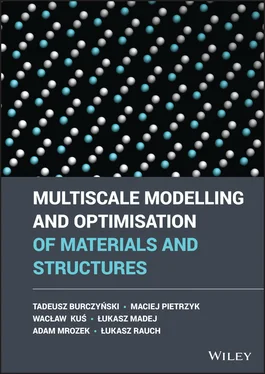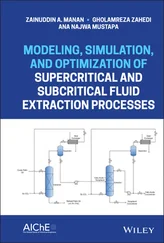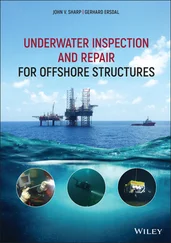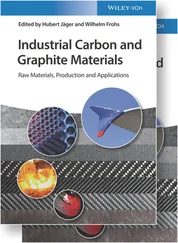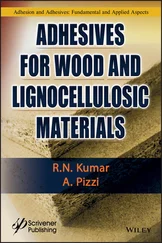The right of Tadeusz Burczyński, Maciej Pietrzyk, Wacław Kuś, Łukasz Madej, Adam Mrozek, and Łukasz Rauch to be identified as the authors of this work has been asserted in accordance with law.
Registered Offices John Wiley & Sons, Inc., 111 River Street, Hoboken, NJ 07030, USA John Wiley & Sons Ltd, The Atrium, Southern Gate, Chichester, West Sussex, PO19 8SQ, UK
Editorial Office 111 River Street, Hoboken, NJ 07030, USA
For details of our global editorial offices, customer services, and more information about Wiley products visit us at www.wiley.com.
Wiley also publishes its books in a variety of electronic formats and by print‐on‐demand. Some content that appears in standard print versions of this book may not be available in other formats.
Limit of Liability/Disclaimer of Warranty The contents of this work are intended to further general scientific research, understanding, and discussion only and are not intended and should not be relied upon as recommending or promoting scientific method, diagnosis, or treatment by physicians for any particular patient. In view of ongoing research, equipment modifications, changes in governmental regulations, and the constant flow of information relating to the use of medicines, equipment, and devices, the reader is urged to review and evaluate the information provided in the package insert or instructions for each medicine, equipment, or device for, among other things, any changes in the instructions or indication of usage and for added warnings and precautions. While the publisher and authors have used their best efforts in preparing this work, they make no representations or warranties with respect to the accuracy or completeness of the contents of this work and specifically disclaim all warranties, including without limitation any implied warranties of merchantability or fitness for a particular purpose. No warranty may be created or extended by sales representatives, written sales materials or promotional statements for this work. The fact that an organization, website, or product is referred to in this work as a citation and/or potential source of further information does not mean that the publisher and authors endorse the information or services the organization, website, or product may provide or recommendations it may make. This work is sold with the understanding that the publisher is not engaged in rendering professional services. The advice and strategies contained herein may not be suitable for your situation. You should consult with a specialist where appropriate. Further, readers should be aware that websites listed in this work may have changed or disappeared between when this work was written and when it is read. Neither the publisher nor authors shall be liable for any loss of profit or any other commercial damages, including but not limited to special, incidental, consequential, or other damages.
Library of Congress Cataloging‐in‐Publication data applied for
Hardback ISBN: 9781119975922
Cover Design: Wiley
Cover Image: © Dr Adam Mrozek
Multiscale Modelling and Optimisation of Materials and Structures presents an important and challenging area of research that enables the design of new materials and structures with better quality, strength, and performance parameters. It also provides a possibility for the creation of reliable models that take into account structural, material, and topological properties at different scales. The book addresses four major areas: (i) the basic principles of macroscale, microscale, and nanoscale modeling techniques; (ii) the connection of microscale and/or nanoscale models with macrosimulation software; (iii) optimization development in the framework of multiscale engineering and the solution of identification problems; (iv) the computer science techniques used in this class of models and advice for scientists interested in developing their own models and software for multiscale analysis and optimization.
Therefore, the book presents several approaches to multiscale modelling, such as the bridging and homogenization methods, as well as the general formulation of complex optimization and identification problems in multiscale simulations. It also presents the application of global optimization algorithms based on robust bioinspired algorithms, proposes parallel and multi‐subpopulation approaches in order to speed‐up computations, and discusses several numerical examples of multiscale modeling, optimization, and identification of composite and functionally graded engineering materials.
Multiscale Modelling and Optimisation of Materials and Structures is thereby a valuable source of information for young scientists and students looking to develop their own models, write their own computer programs, and implement them into simulation systems.
Tadeusz Burczyński: His expertise is in computational sciences, including computational intelligence, computational mechanics, and computational materials science, especially in optimization and multiscale engineering.
Maciej Pietrzyk: His research focuses on numerical modelling including multiscale approach and the application of optimization techniques in materials science.
Wacław Kuś: His scientific interests are related to the applications of parallel and HPC methods in the optimization of multiscale problems in mechanics and biomechanics.
Łukasz Madej: His expertise is in computational materials science and process engineering. The main area of interest is full‐field multiscale modelling of industrial processes and phenomena.
Adam Mrozek: His research focuses on molecular dynamic simulations, optimization of mechanical properties of the 2D materials, and multiscale modelling.
Łukasz Rauch: The main interest of his research is focused on computer science applied in industry including conventional way of modelling as well as application of surrogate models.
1 Introduction to Multiscale Modelling and Optimization
A wide selection of materials exhibits unusual in‐use properties gained by control of phenomena occurring in mesoscale, microscale, and nanoscale during manufacturing. Examples of such materials range from constructional steels (e.g. AHSS – Advanced High Strength Steels for automotive industry [8] and titanium alloys for aerospace industry [10]) through various materials for energy applications [6] to new biocompatible materials for ventricular assist devices [9] or other biomedical applications [11]. Due to potential advances in materials science that could dramatically affect the most innovative technologies, further development in this field is expected. For this to happen, materials science has to be supported by new tools and methodologies, among which numerical modelling plays a crucial role.
On the other hand, to predict the correlation between processing parameters and product properties properly, one needs to investigate macroscopic material behaviour and phenomena occurring at lower dimensional scales, at grain level or even at atomistic levels. Thus, multiscale modelling with the digital materials representation (DMR) concept [7] is a research field that potentially can support the design of new products with unique in‐use properties. The development of new materials modelling techniques that tackle various length scale phenomena is observed in many leading research institutes and universities worldwide. Multiscale analysis of length and temporal scales has already found a wide range of applications in many areas of science. Advantages provided by a combination of numerical approaches: finite element (FEM), crystal plasticity finite element (CPFEM), extended finite element (XFEM), finite volume (FVM), boundary element (BEM), meshfree, multigrid methods, Monte Carlo (MC), cellular automata (CA), molecular dynamics (MD), molecular statics (MS), phase field and level set methods, fast Fourier transformation, etc. are already being successfully applied in practical applications [14].
Читать дальше
